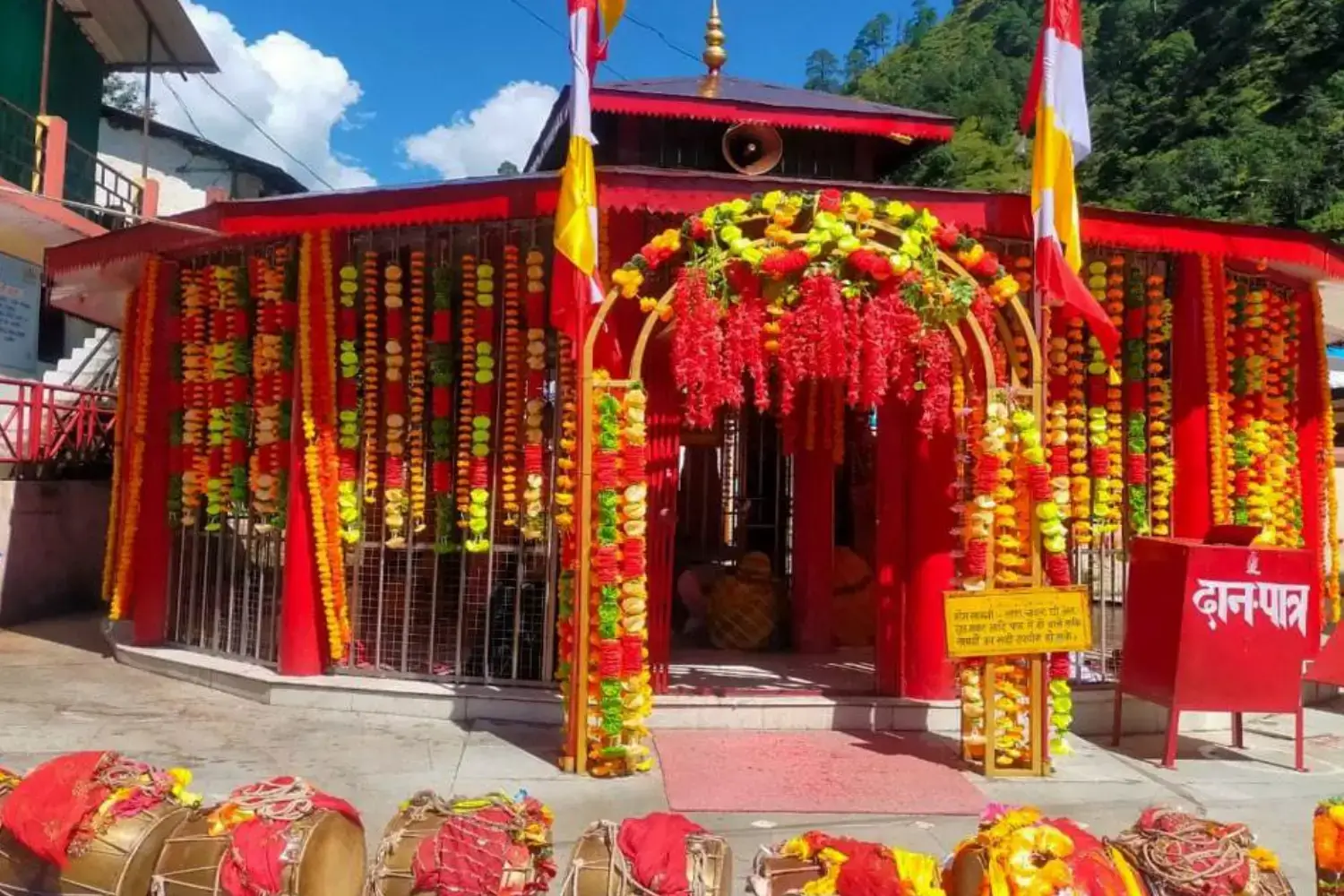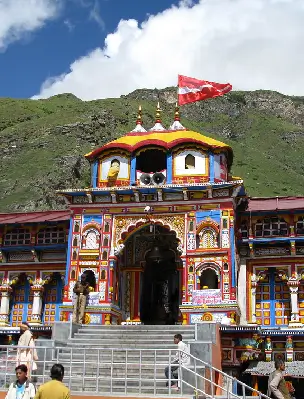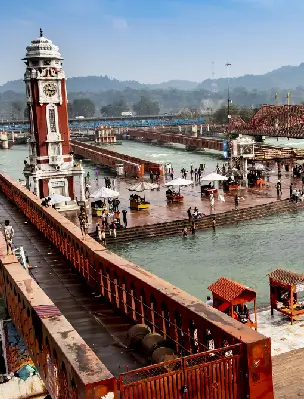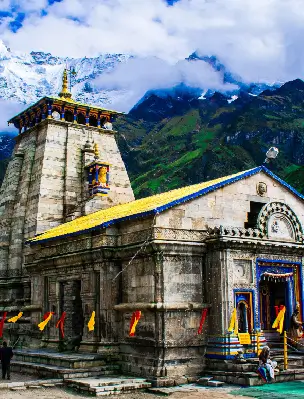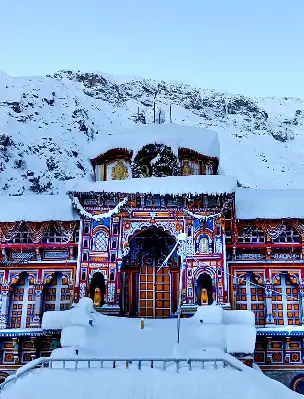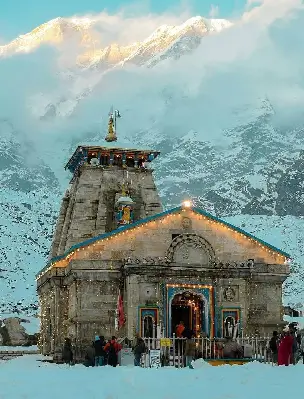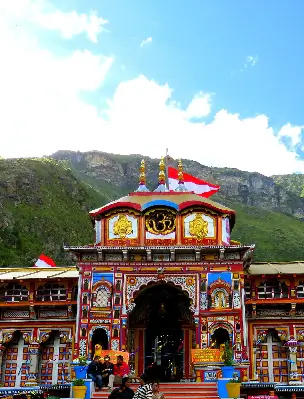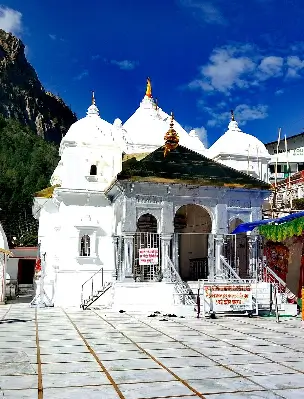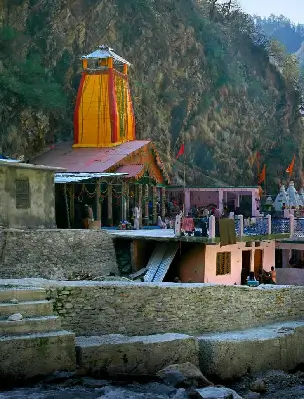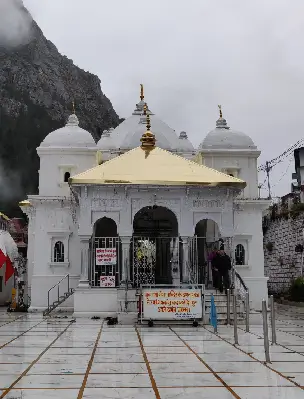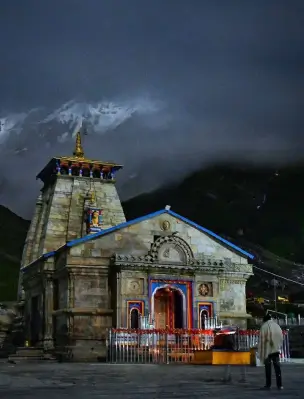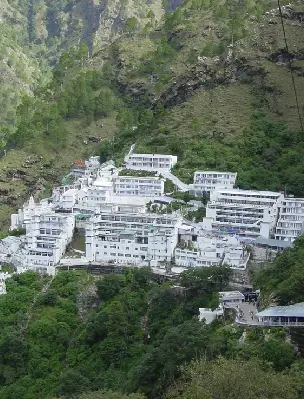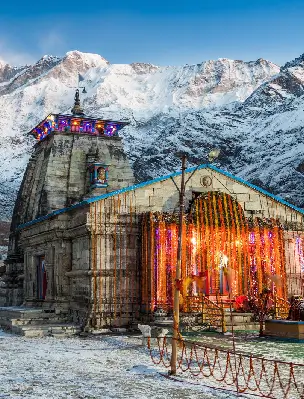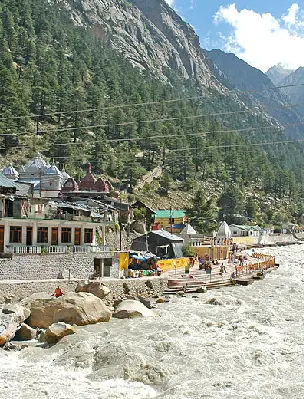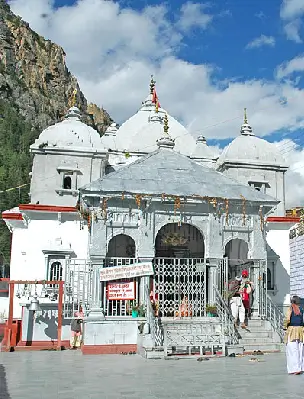Kalimath Temple
About Kalimath Temple, Guptkashi, Rudraprayag
While Garhwal is known for being home to some of the most important pilgrim shrines, particularly dedicated to Lord Shiva, the Kalimath Temple stands as a significant exception. The Kalimath in Rudraprayag district is a sacred village on the banks of Saraswati river, known for the revered temple dedicated to the powerful Goddess Kali. The Kalimath Temple in Guptkashi, Rudraprayag is one of the 108 shakti peethas and draws devotees from across the country.
Kali is the fierce manifestation of the Shakti, the divine feminine energy in Hindu religion, and believed to be the Goddess of time, destruction, and death. Kalimath village is highly revered, not just by its residents but the whole district. Despite the significance, Kalimath retains the charm of an uncrowded pilgrimage, offering spirituality and serenity in a more prevalent way.
The Kali temple in the Kalimath village is beautifully engulfed in the lap of nature on the bank of river Saraswati and offers a cool, salubrious, and divine environment to its devotees. Kalimath Temple is one of the most popular pilgrimage sites in Uttarakhand which is visited by worshippers from far and wide. The temple is also popular as instead of an idol of Goddess, a Kund (ditch) is worshipped in the shrine. The kund is covered with Rajatpat Sri Yantra which is opened once a year during the Navratri festival. This period is one of the grandest celebrated times in the Kalimath.
History of the Kalimath Temple Rudraprayag
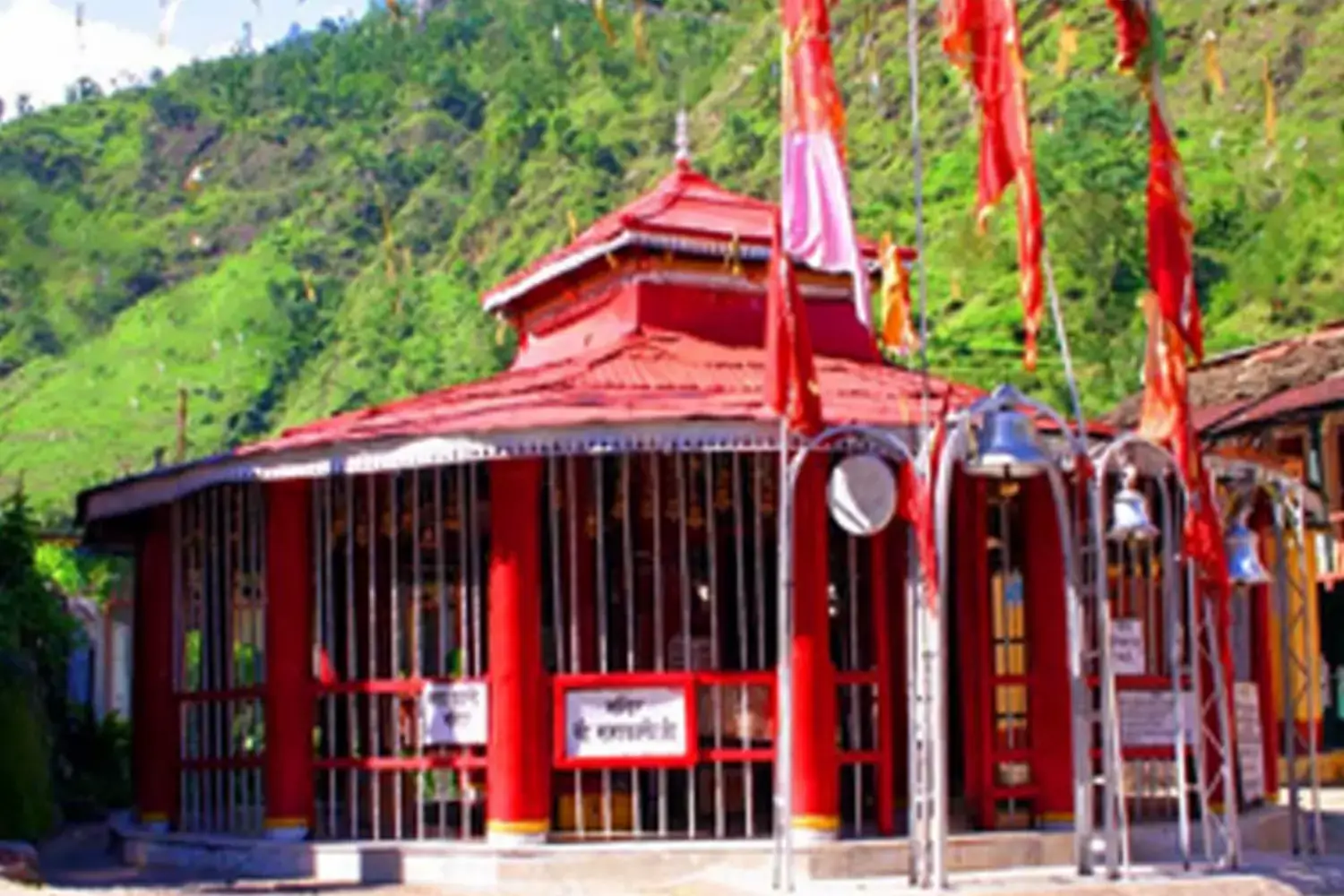
Kalimath in Uttarakhand is an important knot in the thread of Indian religious history. This beautiful valley finds its traces back to the various significant incidents and figures of Hinduism, especially Goddess Kali. Its name is mentioned in several written scriptures and epics.
According to religious mentions, once Daksha Prajapati (A divine king) conducted a yajna and did not invite his daughter Sati and her husband Lord Shiva out of misery. But this mortified Lord Shiva. Due to her father's act, Goddess Sati sacrificed her body in the sacred fire. Lord Shiva, infuriated by this act, began to do tandav holding Sati’s burnt body. During the tandav, portions of Sati’s body started falling at different places. The spots where Sati’s body parts fell were then referred to as Siddha Peeths. Kalimath is one of the 108 Shakti Peethas (or Siddhi Peethas) and the only one in the Kedarnath valley. At this place, Goddess Sati's back fell, symbolising her fierce aspect as the destroyer of evil. There are several other Siddhi Peetha temples across the state of Uttarakhand.
Another mention of Kalimath is in the Markandeya Purana. According to it, to eradicate the growing terror of demons like Raktbeej and Nishumbha, Goddess Durga took the fierce form of Kali. After killing the demon Raktbeej, Goddess Kali disappeared in Kalimath at the spot which now is Kalimath Temple. A ditch in which she disappeared is what is worshipped in the Kalimath temple. The ditch is covered by a silver plate which only is opened once in a year during the Navratri festival.
Architecture and Design of Kalimath Temple
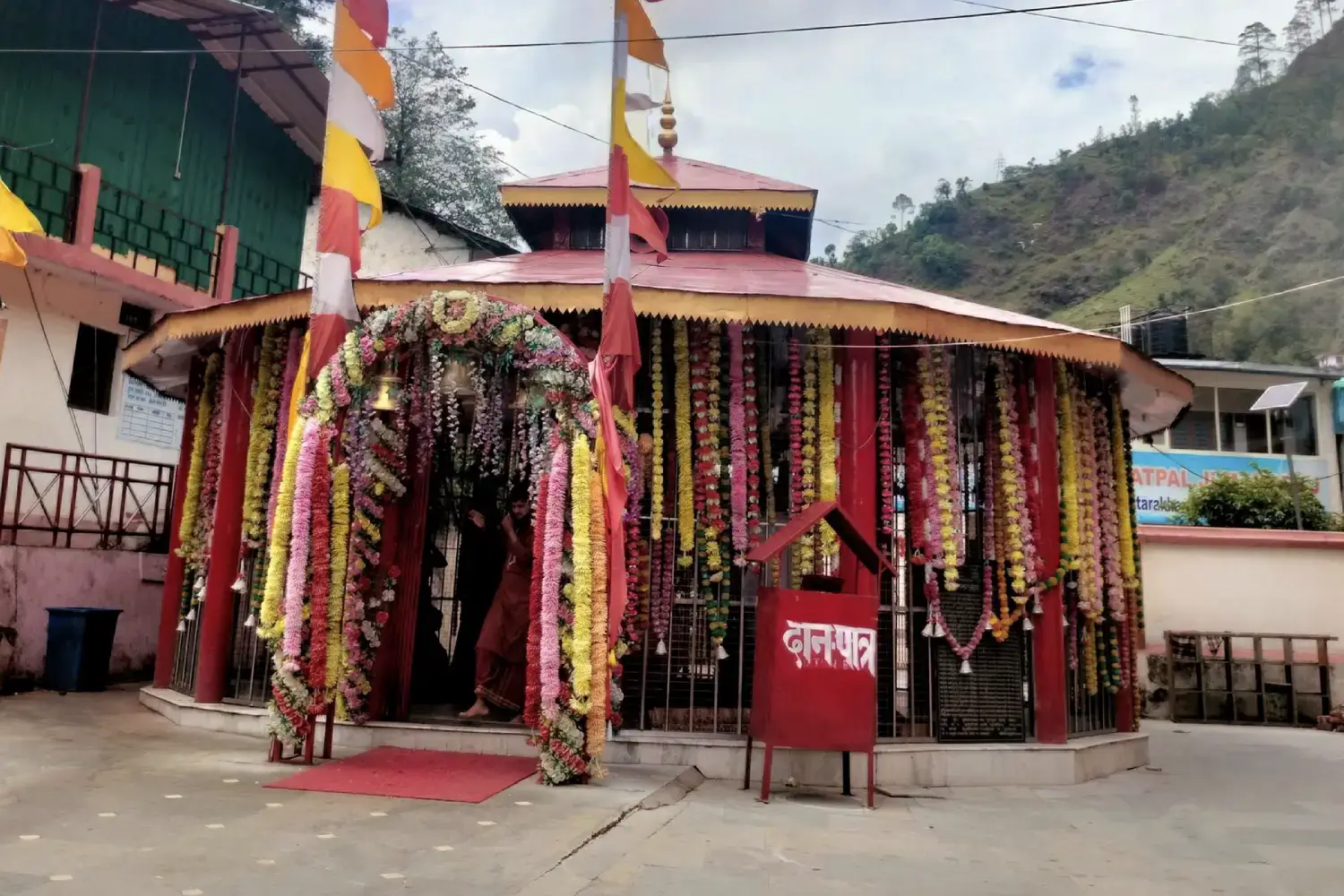
Kalimath Temple is found in a rather serene topography of the great Himalayas. The temple complex has several parts constructed on the bank of the Saraswati River. There are temples for Shiva, Goddess Saraswati, goddess Gauri, and Mahalakhsmi. The complex also has a meditation hall as well as a number of guest houses constructed by the shrine authority. The principal temple which is dedicated to Goddess Kali is circular, beautifully constructed with a sloping roof and built on a square platform. Of great importance within the temple is a silver Sri Yantra, which is worshipped instead of any idol.
Paintings and motifs related to the goddess and her representations cover the encircling wall grill of the Shrine.
The other shrine which is devoted to Lord Shiva is further inside the complex. It also houses the Jyotirlinga and is considered the oldest temple constructed by Adi Shankara, and is of spiritual importance for the worshippers of Lord Shiva. It stands in the traditional north-Indian style using a mandap and a shikhara. Constructed with Rubble stones and less or no binder materials like Mortar or concrete. Also, the Saraswat and Gauri Temple has a similar architecture to the Lord Shiva temple. The meditation hall called the Shankaracharya Kutir was built for the visitors where they can sit and meditate and reflect. The guest houses located close to the temple provide adequate lodging for those who would want to spend the night and be close to the temple.
Religious & Cultural Importance
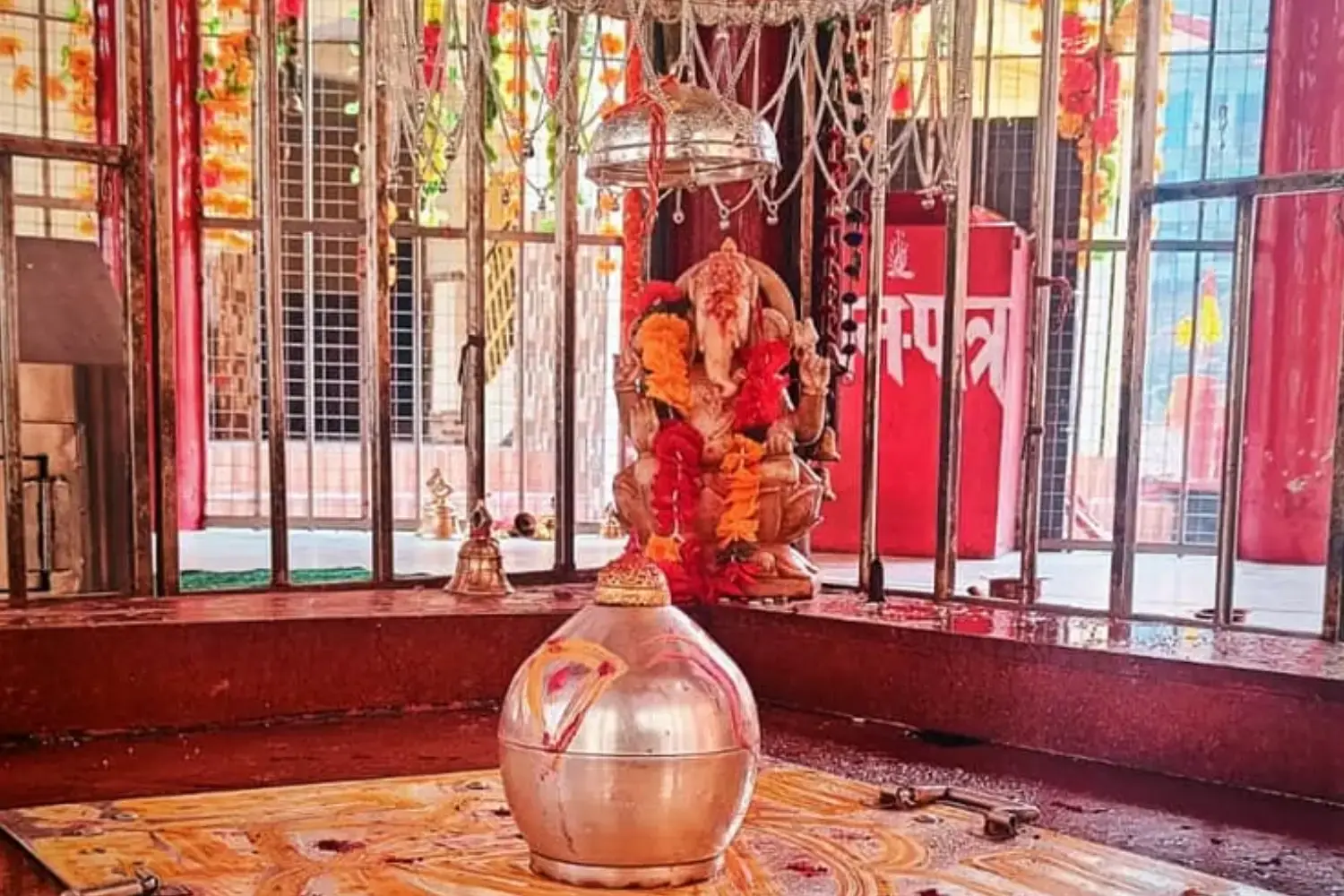
Although unpopular, Kalimath has great importance among the whole Rudraprayag district. The temple of Kali Mata in Kalimath village is highly revered by devotees all around. It is even a common belief among district locals to first worship newly purchased vehicles in this temple and keep a picture of the Goddess in the vehicle at all times.
While exploring Kalimath, you get to experience a heartwarming welcome. Locals are eager to help and tell you the legends and unknown facts about the village.
Although the Kali Mata Temple stays open for devotees all-round the year, it comes to life during the Navratri festival. This nine-day festival is celebrated with great enthusiasm and reverence. The temple is decorated with lights and colours, grand aarti is performed every evening, and prasad is distributed among devotees. This auspicious festival sees a huge number of pilgrims in the village. As a sign of reverence to the deity, many women keep fast for either one day or throughout the festival duration, during the Navratri festival.
Mahashivratri is another auspicious festival in Kalimath. People at Kalimath worship Lord Shiva, as they are the consort of Maa Kali, as an honour.
Best Time to Visit Kalimath Temple
Ideally, the best time to visit the Kalimath temple is during the summer season, from late April to late June. It is also a relatively warm time of the year and sunny which is ideal for tourists and pilgrims visiting this high-altitude area. The climate is the most appropriate for travelling and worshipping with the average temperatures of 10 – 30 °C. Moreover, the scenery of the area is scenic and becomes striking during this period to make the journey spiritually fulfilling and with aesthetic values as well.
Another good time to visit Kalimath is in Autumn, after the monsoon, particularly between the months of September and November. These months are greener and fresher. With the monsoon season over, the possibilities of having to cross through areas that are susceptible to landslides and having roads washed away are minimal, thus the journey is safer.
Autumn is a cooler climate and less humid making the atmosphere very pleasant compared to the cold months. It is also a blessed period because the temple celebrates its festivals in the same or neighbouring months, such as Navratri, where thousands flock to get the divine blessings of Goddess Kali.
How to Reach Kalimath Temple?

- By Road: The easiest way to reach Kalimath is through road transport. The village is well connected by roads. Numerous taxis and buses ply between the various districts of Uttarakhand and Rudraprayag. You can take a cab from Rudraprayag to the Kalimath Temple.
- By Air: The nearest airport to Kalimath is Jolly Grant Airport which is situated at a distance of approx 204 km. Taxis will take you right to Kalimath from the airport. There are frequent buses available for travelling from Dehradun to Rudraprayag as well as from Rudraprayag to Dehradun.
- By Railway: The nearest railway stations to Kalimath are Rishikesh and Haridwar which are 186 Kms and 210 Kms away from the locale respectively. Out of both Haridwar is more connected to other cities. On arrival at the railway station, you can easily find a taxi for Kalimath.
Where to Stay in Kalimath Rudraprayag?
Although a small village, Kalimath has various hotels and homestays to accommodate. The accommodations in Kalimath offer a magnificent view from their window. However, for more high-end amenities, you can always look for hotels and lodges in nearby villages like Ukhimath, Guptkashi, or Sari.
Nearby Places to Visit Kalimath Temple
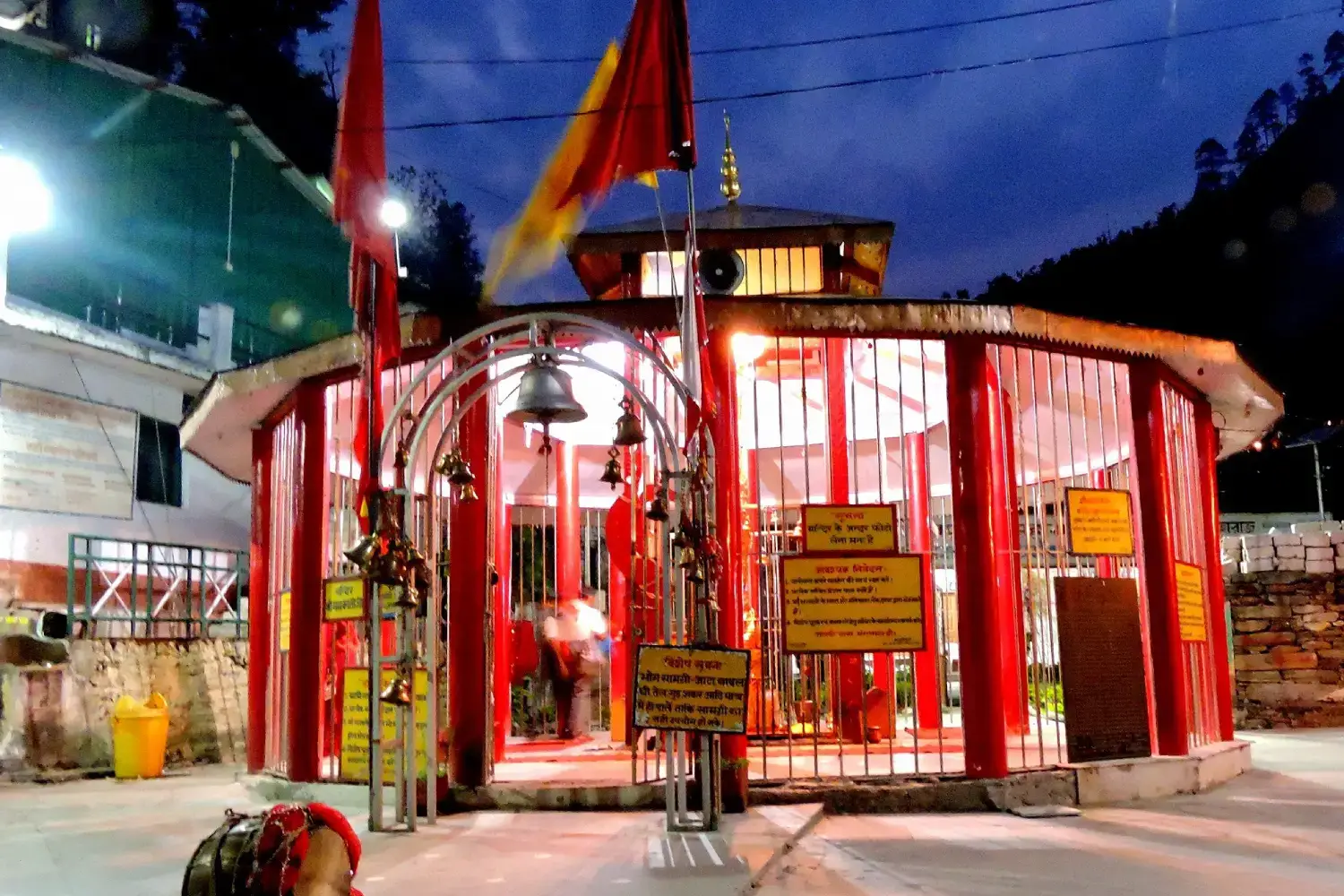
Within a distance range of 60-100 km, the following are some of the best places to visit near Kalimath Temple.
- Chotpa -Tungnath - Chandrashila
- Ukhimath Village
- Guptkashi & Sonprayag
- Gaurikund
- Deoriatal
- Madhymaheshwar Temple
- Rudranath Temple
Chotpa - Tungnath - Chandrashila
A perfect off-beat destination, whose beauty is often compared to Switzerland- Chopta is one of the best places to visit near Kalimath. Rolling lush hills and a length of white mountains peeking from the back make the landscapes just adorable. Chopta is known for a few of the most infamous trekking spots in the Garhwal Himalayas -- Tungnath, Chandrashila, and Deoria Tal trek. While Deoria Tal is a shorter trek with a mesmerising landscape of blue lake backed by white glacial peaks, the Tungnath and Chandrashila trek are more demanding and with highly rewarding views at the top.
Ukhimath Village
Ukhimath village is the nearest excursion destination to Kalimath, only 12 kilometres away. This village is more peaceful and much more beautiful than other popular places around. Surrounded by lush mountains and majestic mountains of the Great Himalayas, you can easily find various uncommon hiking trails, which come out as interesting adventures. And the top points of hikes give you an unfiltered view of peaks like Kedarnath and Chaukhamba Parvat.
Ukhimath is also a Hindu pilgrimage centre and has two important temples dedicated to Lord Shiv and the goddess Parvati. The Omkareshwar Temple, dedicated to Shiv, is the winter seat of Kedarnath. Ukhimath is also the base point for treks like the Tungnath Chandrashila trek, Deoria trek, and Madhyamaheshwar.
Guptkashi & Sonprayag
Replete with mythological tales, Ancient temples, and the beauty of mountains, Guptkashi is a religiously important town near Kalimath. It is about 11 kilometres from Kalimath to Guptkashi. The elevation of 1,319 m and lush flora make it a serene beauty you do not come across daily. The name, Guptkashi, refers to the hidden abode of Shiva. It is believed that Lord Shiv initially hid here when Pandavas were in search of Lord Shiv to atone for their sins of killing kin in the battle of Mahabharat.
Another location, just 25 kilometres from Guptkashi, to visit near Kalimath is Sonprayag. This village is the major stop before starting the Kedarnath trek from Gaurikund. It is located on the confluence of the Basuki and Mandakini river and serves as an escape from every ounce of the tourist crowd. Guptkashi and Sonprayag, both are enriched with the Himalayan ecosystem and are at the edge of Kedarnath Wildlife Sanctuary, thus have a stunning diversity of flora and fauna.
Gaurikund
Gaurikund is a unique village known for creating a spiritual aurora before transcending to one of the most pious pilgrimage journeys to Kedarnath. The 14-kilometre sacred trek to Kedarnath temple starts right after Gaurikund village. This village is dedicated to Goddess Gauri, the benevolent manifestation of Goddess Parvati. It is believed that she did a long ascetic and yogic austerity to win Lord Shiva's affection.
Gaurikund village is most revered for its various hot springs (Kunds), especially the holy spring named Gaurikund. Most of the devotees take a dip in the Gaurikund before proceeding on their trek to Kedarnath Temple. You can visit the Gauri temple, where the marriage of Shiv and Gauri is believed to have happened.
Deoriatal
Deoria Tal (Deoria Lake) is a high-altitude lake situated 20 Km from Kalimath village. It is one of the most liked nature trekking destinations in Uttarakhand. Set among a predominating thicket of rhododendrons and oak trees, this beautiful lake reflects the snowy picture of Kedarnath and Chaukhamba peaks on a clear day. Located at an altitude of about 2438 metres above sea level the lake’s perimeter is estimated to be between 2-3 km. The route to Deoria Tal is moderate and hence trekking to Deoria Tal is one of the more famous treks near Kalimath for starters and nature lovers.
The 3-kilometre trek to the lake begins from the village of Sari, enjoying the scenery of meadows and forests along the way. The scene right after getting to the lake is incredibly serene and does favour the definition of the word magical. Because of the elevation, you get a clear view of white glacial mountains backing the lake. Historically and mythologically, Deoria Tal is called the place where Indra and Shiva's discourse were held and also stated as the place where Gods used to bathe, thus called ‘Indra Sarovar’ according to Puranas. The other tale associated with the lake is that Bheem himself made the lake to fulfil his thirst.
Madhymaheshwar Temple
The Madmaheshwar Temple located near Chopta village is another important shrine of Lord Shiva in the region near Kalimath. This temple is one of the five temples in the Panch Kedar circuit and is believed to mark the spot where the navel of lord Shiva fell.
It is located in the hilly areas with green fields and trees around and beautiful meadows; a perfect atmosphere for meditation or to pray. The temple architecture is evidently north Indian style with a sanctum that enshrines a silver lingam. The location is beautiful, enveloping both Spiritual resonance and Physical beauty.
Rudranath Temple
Rudranath Temple is another temple among the ‘Panch Kedar’ circuit after Madhyamaheshwar Temple near Kalimath. It is about 85 kms from Kalimath and situated at an altitude of more than 3600 metres. This historical temple was constructed by the Pandavas as per the scriptures of the great Hindu epic – Mahabharata. The path to Rudranath Temple is considered to be one of the most difficult treks; however, it is quite spiritually fulfilling.
The Rudranath temple is a shrine of Lord Shiva where the deity's Mukha or face is worshipped. The route to Rudranath Temple, through Sagar village, is the best way to explore the natural grandeur. Also, this Himalayan region has rich biodiversity, beautiful meadows known as ‘Bugyals,’ and natural springs.
You Might Also Like to Read
- The History of Kumbh Mela
- Chardham Yatra Offline Registration
- Tungnath Temple Opening & Closing Dates
- 12 Jyotirlinga Temples in India
- Madmaheshwar Temple Opening & Closing
- Badrinath & Hemkund Sahib Helicopter Yatra Services
- Kedarnath Yatra Helicopter Booking Guide
- Online/Offline Registration information for Chardham Yatra
- Char Dham Yatra by Helicopter
- Top Things to Carry with Chardham Yatra
- Best Places to Visit in Uttarakhand
- Best Places to Stay in Badrinath
- Best Places to Stay in Kedarnath
- Rudranath Temple Opening & Closing
- Online Puja Booking at Badrinath & Kedarnath Temple
- Places to Visit Near Badrinath Dham
- Akshaya Tritiya Festival Information
- Best Places to Explore Enroute Kedarnath Dham Yatra
- Ranikhet Tourism- Top Places to Explore & Things to Do
- Kalimath Temple Information
- History of Shri Kedarnath Temple
Popular Tours
Book The Tour
Char Dham Temples
Hotels in Chardham Circuit
Char Dham Tour Packages
- Char Dham Yatra From Delhi
- Chardham Yatra From Mumbai
- Char Dham Yatra From Ahmedabad
- Chardham Tour with Hemkund Sahib
- Chardham Yatra by Helicopter
- Char Dham Yatra with Vaishno Devi & Amritsar
- Chardham Tour with Gomukh Trek
- Char Dham Packages From Bangalore
- Chardham Yatra From Chandigarh
- Char Dham Yatra with Auli
- Char Dham Yatra From Hyderabad
- Char Dham Yatra with Vaishno Devi, Jwalaji & Amritsar
- Char Dham Yatra From Chennai
- Chardham Packages From Bhopal
- Char Dham Yatra by Luxury Vehicle
- Char Dham Yatra with Satopanth Lake
- Char Dham Yatra with Panch Badri Tour
- Char Dham with Valley of Flowers
- Chardham Yatra with Mahavatar Baba and Nainital Tour
Do Dham Yatra
- Badrinath Kedarnath Yatra From Haridwar
- Badrinath Kedarnath Yatra
- Gangotri Yamunotri Yatra
- Gangotri Yamunotri Yatra from Haridwar
- Kedarnath Badrinath Yatra with Hemkund Sahib
- Kedarnath Badrinath Yatra with Valley of Flowers
- Kedarnath, Badrinathdham With Lake Of Nainital
- Yamunotri, Gangotri with Lake of Nainital
Ek Dham Yatra
- Badrinath Pilgrimage Tour
- Kedarnath Pilgrimage Tour
- Gangotri Pilgrimage Tour
- Yamunotri Pilgrimage Tour
- Kedarnath Yatra By Helicopter
- Badrinath Dham Yatra from Haridwar
- Badrinath Yatra with Hemkund Sahib
- Badrinath Yatra with Valley of Flowers
- Gangotri Dham Yatra with Gaumukh
- Kedarnath Dham Vasuki Tal Trek
